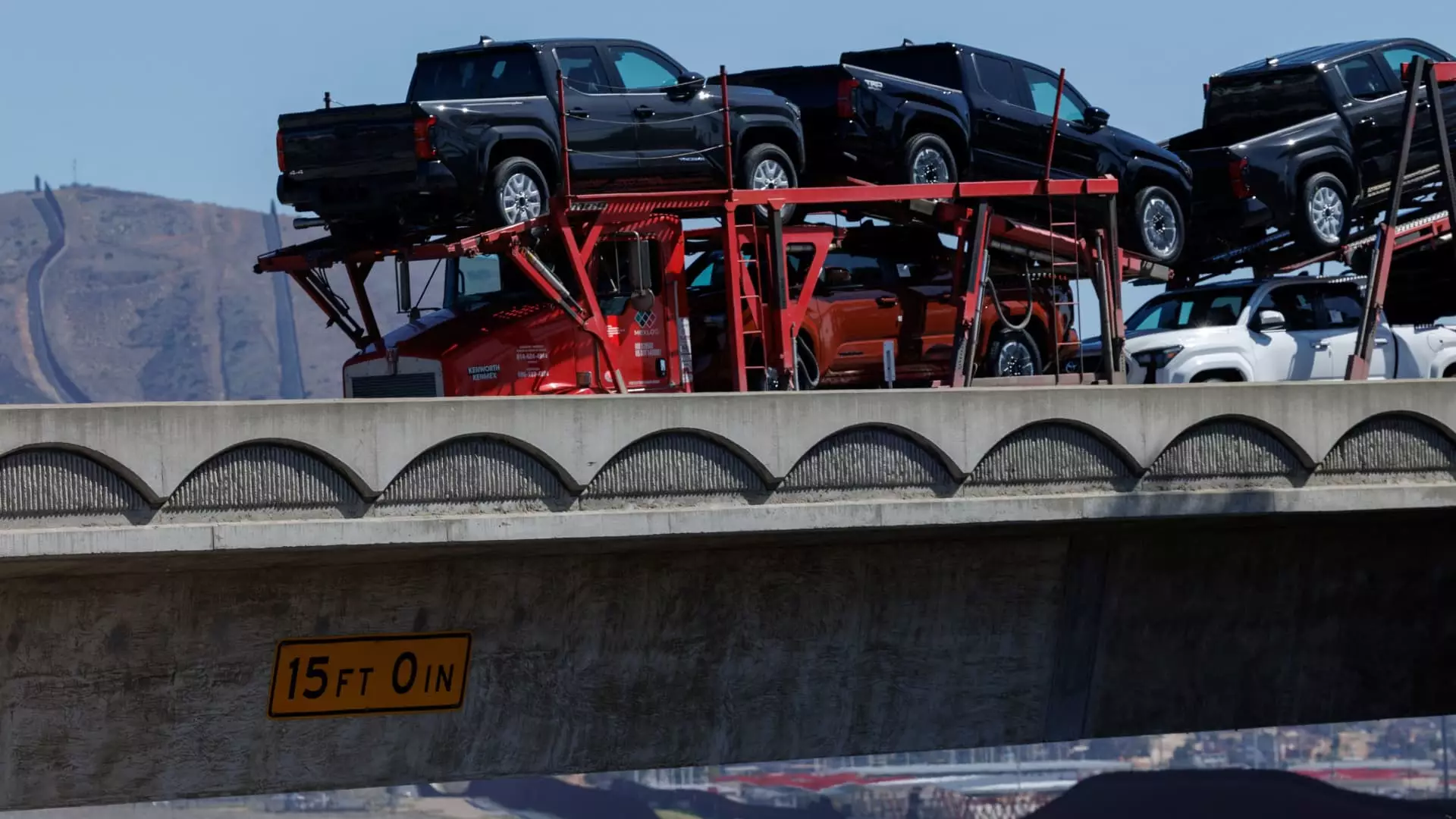The announcement of a 25% tariff on imported automobiles by President Donald Trump has sent shockwaves through the auto industry, leaving auto stocks and workers in a precarious position. Despite the administration’s previous indications of such a move, the specifics of enforcement are now being fashioned and the financial fallout is becoming evident. With car manufacturers in the U.S. facing the wrath of significant tariffs, the ramifications are positioned to trickle down from corporate boardrooms right to the wages of assembly line workers, thrusting the industry and its employees into a potential crisis.
The Stock Market Reaction
In the immediate aftermath of the announcement, shares of the “Detroit Three”—General Motors, Ford, and Stellantis—plummeted. General Motors led the decline with a staggering drop of over 7%, while Ford and Stellantis witnessed more moderate losses of around 3% and 1%, respectively. Tesla’s stock, in stark contrast, remained relatively unaffected. Deutsche Bank analysts shared that automakers like Tesla and Ford, which have been strategically located to encase assembly facilities in the U.S., could be better shielded from the impact of these tariffs. GM’s extensive exposure to parts sourced from Mexico, however, leaves it vulnerable to the fallout.
Though the steel and aluminum tariffs implemented previously have also had an impact, this specific move toward car tariffs paves the way for a far larger confrontation. Already, the potential for millions in losses and price increases for consumers raises questions about the viability of this protectionist strategy.
An Underlying Crisis for Consumers
As American consumers are poised to face car price hikes that may range between $5,000 to $15,000 for imported vehicles, the math gets even more daunting when factoring in domestic car prices. If about 50% of a car’s parts come from foreign suppliers, domestic vehicles could see price surges between $3,000 and $8,000. These increases threaten to put new cars out of reach for many Americans, who might now reconsider vehicle ownership altogether. The anticipated explosion in prices further marginalizes low- and middle-income households, forcing them to reevaluate their budgets as car ownership becomes an increasingly costly dream.
This economic pressure is compounded by the fact that vehicles contain nearly 20,000 parts, emphasizing the highly interconnected nature of the automotive supply chain across multiple borders. The reality that many components are sourced from various global locations means that tariffs create an intricate web of complications that could result in inflationary pressures not only in auto sales but throughout the economy.
Labor Unions and Political Reactions
From the perspective of labor unions, the announcement elicited optimism and support. The United Auto Workers union hailed the measures as a pivotal step for autoworkers, emphasizing a commitment from automakers to revitalize jobs domestically. However, their glee may overshadow the grim reality that such measures can have unpredictable outcomes if imposed without consideration for supply chain dynamics.
Key players in the automotive field argue that these tariffs, while boosting domestic production, must avoid escalating prices for consumers and preserve competitiveness within the North American automotive sector. Former Missouri Governor Matt Blunt, representing the American Automotive Policy Council, notes that these tariffs should serve to bolster American jobs, but warns against maintaining price competitiveness in an integrated market.
As various stakeholders voice their opinions, it becomes apparent that the road ahead is fraught with uncertainty. A more aggressive and well-thought-out policy approach is required to navigate these tariffs successfully while safeguarding both consumers and workers.
A Call for Reevaluation
As we consider the implications of the newly imposed tariffs, it’s crucial to recognize the administrative push for domestic production, which, despite its good intentions, may inadvertently kneecap consumer options and destabilize the entire auto sector. A path forward must balance protectionist measures and economic realities to foster a healthy automotive industry that can thrive domestically without stifling consumer access and affordability.
In this critical moment, the auto industry stands at a crossroads, and whether it will emerge invigorated or damaged hinges on the ability of politicians, businesses, and labor to come to a consensus that actually protects American workers while ensuring the future remains bright for consumers.

Leave a Reply